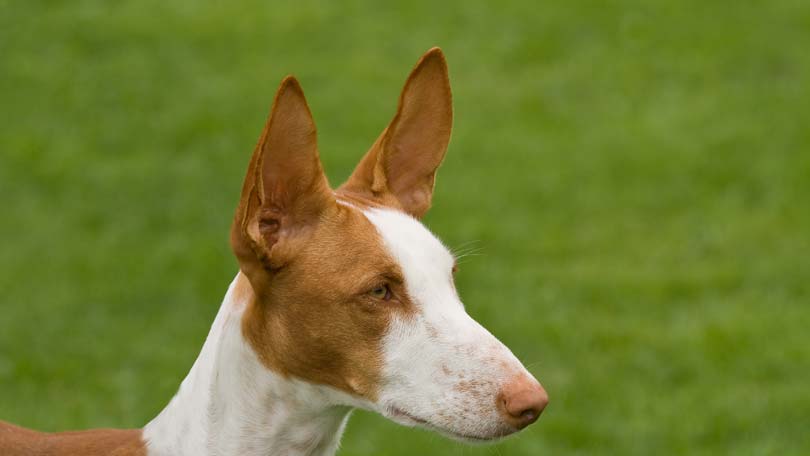
The use of gluten in pet food has been a subject of great controversy since the massive commercial food recalls in early 2007 due to contamination from melamine. Thousands of animals became sick and many died from the invisible toxin, bringing the use of gluten to the forefront of concerned pet owners. Questions about whether pet food should contain gluten and whether is it causing more harm then good have caused heated debates amongst the pet owning public! Many professionals as well as the average pet owner are beginning to wonder whether gluten free dog food would be preferable.
What is Gluten?
Gluten is a unique blend of two proteins, gliadin and glutenin found in wheat, rye, and barley. It is conjoined with the starch molecules and is insoluble in water but can be removed or separated from the grain, making wheat starch. In many countries, gluten is an important source of protein and is often added to other foods that are low in nutritional protein.
On a less academic level, gluten is what gives bread the elastic, ‘kneadable’ texture and gives bagels their chewy texture.
Gluten and Dogs
The argument about gluten and the possibilities of gluten free dog food revolve around whether or not pets can digest the wheat protein.
Like humans suffering from gluten intolerance or celiac disease, many experts believe that dogs and cats cannot properly digest or absorb the protein from gluten because their digestive systems were not exposed to it during their natural evolution. In the wild and historically, a dog’s diet consists of meat, greens, fruit, fish, and anything they can scavenge.
Grains, on the other hand, were only introduced in the previous century, as commercial diets became a convenient and inexpensive way to feed our four-legged family members. Why is gluten added to pet food? It is an inexpensive filler and increases protein levels in kibble while helping to improve the look and texture of canned foods.
However, veterinarian Dr. John B. Symes believes that gluten can cause acute or chronic kidney failure in dogs, much like how celiac disease can affect humans and the tainted wheat gluten caused widespread illness amongst our four-legged friends. He actually takes it one step further and adds other foods that contain the same lectins as gluten to the list including dairy products, soy, and corn, believing that all these foods are harmful to dogs and humans in varying degrees dependent on sensitivity.
Dr. Symes is research the link between gluten, lectins, and the increase in autoimmune-based disease in dogs and cats.
How to Feed your Dog a Gluten Free Diet
Thankfully there are several avenues open to feeding a gluten free dog food.
Many commercial pet food manufacturers are realizing the many health benefits of a gluten free diet and producing a variety of products to choose from depending on your pet’s needs. High quality commercial diets are a worry-free and convenient way to feed a gluten free dog food that guarantees a properly balanced and nutritionally available diet. For many of us, this is the simplest solution to the gluten problem!
Smaller manufacturers of custom dog food also offer gluten free choices for owners concerned about lectin sensitivity in their pet. Custom dog food manufacturers address the gluten issue by producing grain, soy, corn, and dairy free foods in single batches, made the day you place your order and delivered right to your doorstep. These foods allow for each pet’s unique nutritional needs to be met and use only the freshest whole food ingredients, yet offer the same convenience as large batch manufactured dry dog food. Custom dog foods are formulated by veterinary nutritionists and offer the choice of supplements for a variety of common medical conditions.
For those of us who have the time and energy to make homemade dog food, it is easy to produce a gluten free diet for your pet. Whole, fresh meats, vegetables, and simple fiber and protein sources such as split peas, quinoa, potatoes, and brown rice are simple to buy, cook, and package for quick daily meals. The difficult part of homemade diets is guaranteeing that your pet’s nutritional needs are met. Talk to your veterinarian or book an appointment with a veterinary nutritionist for more information about how best to cook for you dog!
There are commercially produced homemade or real food diets available as well that are gluten free and almost as convenient as dry dog food as long as you have access to freezer space. Top quality commercially produced homemade diets are often developed under the guidance of a veterinary nutritionist and come in easy to use shrink-wrap packaging.
Is Gluten Free Dog Food the Right Choice for your Dog?
Does your dog have chronic or reoccurring diarrhea or loose stools? Many dogs suffer from gluten sensitivity and, luckily, the test is a simple one – switch him to a gluten free dog food for three to six weeks. If the condition improves then continue him on the diet for several more months while switching his treats and chews to similar grain free ingredients. Within two months on a gluten free diet, his overall health should improve, from everything from digestive complaints to the amount of oil produced by his skin and coat.
While experts cannot yet agree on whether dogs suffer from celiac disease, feeding a gluten free dog food is a healthy choice until further information is available.





